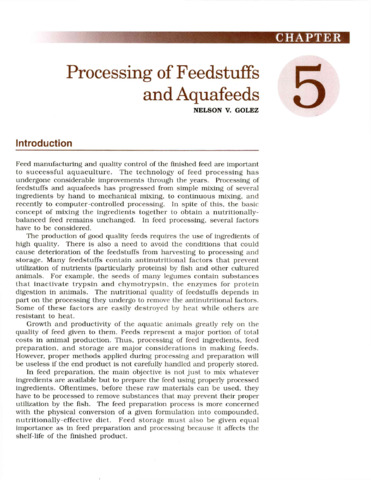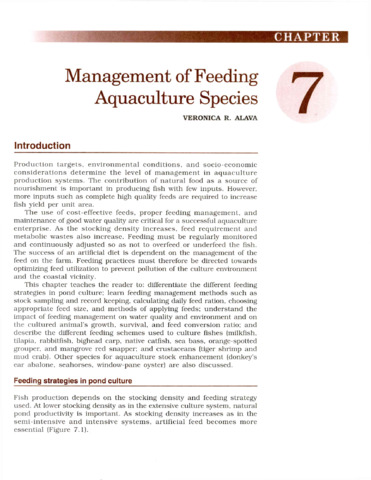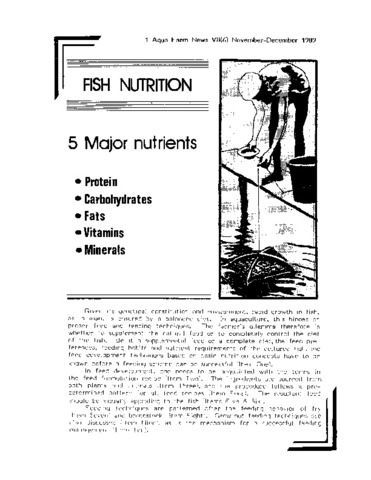Terrestrial leaf meals or freshwater aquatic fern as potential feed ingredients for farmed abalone Haliotis asinina (Linnaeus 1758)
| dc.contributor.author | Reyes, Ofelia S. | |
| dc.contributor.author | Fermin, Armando C. | |
| dc.date.accessioned | 2014-05-06T06:30:25Z | |
| dc.date.available | 2014-05-06T06:30:25Z | |
| dc.date.issued | 2003 | |
| dc.identifier.citation | Reyes, O. S., & Fermin, A. C. (2003). Terrestrial leaf meals or freshwater aquatic fern as potential feed ingredients for farmed abalone Haliotis asinina (Linnaeus 1758). Aquaculture Research, 34(8), 593-599. | en |
| dc.identifier.issn | 1355-557X | |
| dc.identifier.uri | http://hdl.handle.net/10862/1999 | |
| dc.description.abstract | Three terrestrial leaf meals, Carica papaya, Leucaena leucocephala, Moringa oliefera and a freshwater aquatic fern, Azolla pinnata were evaluated as potential ingredients for farmed abalone diet. All diets were formulated to contain 27% crude protein, 13% of which was contributed by the various leaf meals. Fresh seaweed Gracilariopsis bailinae served as the control feed. Juvenile Haliotis asinina (mean body weight=13.4±1.6 g, mean shell length= 38.8±1.4 mm) were fed the diets at 2–3% of the body weight day–1. Seaweed was given at 30% of body weight day–1. After 120 days of feeding, abalone fed M. oliefera, A. pinnata-based diets, and fresh G. bailinae had significantly higher (P<0.01) specific growth rates (SGR%) than abalone fed the L. leucocephala-based diet. Abalone fed the M. oliefera-based diet had a better growth rate in terms of shell length (P<0.05) compared with those fed the L. leucocephala-based diet but not with those in other treatments. Furthermore, protein productive value (PPV) of H. asinina was significantly higher when fed the M. oliefera-based diet compared with all other treatments (P<0.002). Survival was generally high (80–100%) with no significant differences among treatments. Abalone fed the M. oliefera-based diet showed significantly higher carcass protein (70% dry weight) and lipid (5%) than the other treatments. Moringa oliefera leaf meal and freshwater aquatic fern (A. pinnata) are promising alternative feed ingredients for practical diet for farmed abalone as these are locally available year-round in the Philippines. | en |
| dc.description.sponsorship | The authors wish to thank Dr. R. Coloso, Dr. V. Alava, and I. G. Borlongan for their comments onthe draft of the manuscript and Ms. F. Jarder for chemical analyses of the feeds and abalone carcass. | en |
| dc.language.iso | en | en |
| dc.publisher | Blackwell Publishing | en |
| dc.subject | Azolla pinnata | en |
| dc.subject | Carica papaya | en |
| dc.subject | Haliotis asinina | en |
| dc.subject | Leucaena leucocephala | en |
| dc.subject | Moringa oleifera | en |
| dc.subject | Philippines | en |
| dc.title | Terrestrial leaf meals or freshwater aquatic fern as potential feed ingredients for farmed abalone Haliotis asinina (Linnaeus 1758) | en |
| dc.type | Article | en |
| dc.identifier.doi | 10.1046/j.1365-2109.2003.00846.x | |
| dc.citation.volume | 34 | |
| dc.citation.issue | 8 | |
| dc.citation.spage | 593 | |
| dc.citation.epage | 599 | |
| dc.citation.journalTitle | Aquaculture Research | en |
| seafdecaqd.library.callnumber | VF SJ 0757 | |
| seafdecaqd.databank.controlnumber | 2003-16 | |
| dc.subject.asfa | animal nutrition | en |
| dc.subject.asfa | aquatic plants | en |
| dc.subject.asfa | body condition | en |
| dc.subject.asfa | diet | en |
| dc.subject.asfa | feed composition | en |
| dc.subject.asfa | feeding experiments | en |
| dc.subject.asfa | growth rate | en |
| dc.subject.asfa | leaves | en |
| dc.subject.asfa | mollusc culture | en |
| dc.subject.asfa | shells | en |
| dc.identifier.essn | 1365-2109 | |
| dc.subject.scientificName | Gracilariopsis heteroclada | en |
Files in this item
| Files | Size | Format | View |
|---|---|---|---|
|
There are no files associated with this item. |
|||
This item appears in the following Collection(s)
-
Journal Articles [1256]
These papers were contributed by Department staff to various national and international journals.



